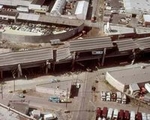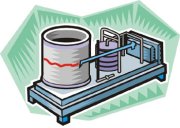
Worksheets and No Prep Teaching Resources
Reading Comprehension Worksheets
Earthquakes

Earthquakes
 Worksheets and No Prep Teaching Resources Reading Comprehension Worksheets Earthquakes |
 Earthquakes |
| edHelper's suggested reading level: | grades 7 to 9 | |
| Flesch-Kincaid grade level: | 9.14 |
|
"Seizing" Up the Quake: The Measurement
By Trista L. Pollard |

|
 1 The earth shakes and shifts in many places. So, how do seismologists determine where seismic activity takes place? How do they know what magnitude the earthquake registers on the Richter scale? Let us examine the methods seismologists use for "seizing" up an earthquake.
1 The earth shakes and shifts in many places. So, how do seismologists determine where seismic activity takes place? How do they know what magnitude the earthquake registers on the Richter scale? Let us examine the methods seismologists use for "seizing" up an earthquake. |
Create Weekly Reading Books
Prepare for an entire week at once! |
| Leave your feedback on "Seizing" Up the Quake: The Measurement (use this link if you found an error in the story) |
 |
Earthquakes
|
 |
High School Reading Comprehensions and High School Reading Lessons
|
 |
Science
|